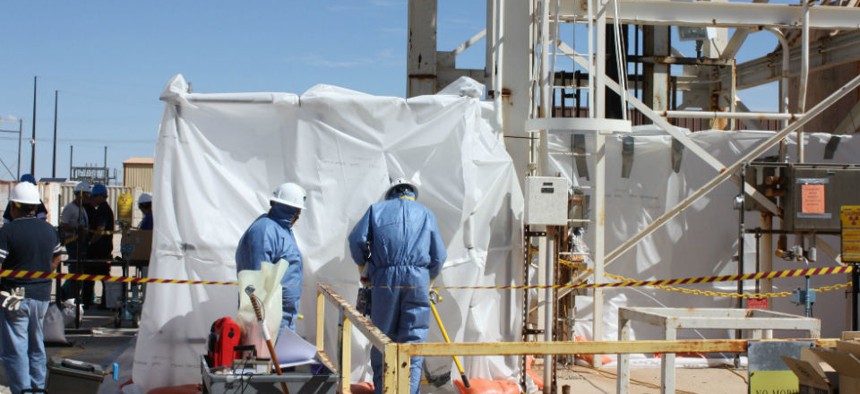Los Alamos Approved Nuclear-Waste Packing Mix, Despite Risks

Specially-trained workers make unmanned tests inside a nuclear waste dump at DOE's Waste Isolation Pilot Plant in Carlsbad, N.M. Department of Energy/AP
Officials approved a caustic mixture to pack nuclear-waste drums now in danger of bursting.
Los Alamos National Laboratory approved a caustic mixture to pack nuclear-waste drums now in danger of bursting, the Albuquerque Journal reports.
Laboratory personnel last year granted a contractor's requests to begin packing the barrels with two substances widely understood to produce thermal reactions when combined with nitrate salts in the waste, according to Los Alamos e-mails made available by New Mexico environment officials. The organic materials were in addition to a cat-litter absorbent previously linked to a container breakage at the Waste Isolation Pilot Plant near Carlsbad, the Journal reported on Thursday.
A radiation leak in the underground repository halted operations there in February, and prompted worries that hundreds of similarly packed waste containers may be in danger of breaking open.
New Mexico's government obtained correspondence between Los Alamos and EnergySolutions, the laboratory's waste-packaging contractor, in an effort to determine "what happened and whether they deviated from the regulations," the state's top environmental official said.
"It doesn't really matter who is to blame," New Mexico Environment Secretary Ryan Flynn added. "They all work for [the Energy Department]."
Jim Conca, a former Los Alamos staffer, said questions on the proposed packaging "went up the chain to the wrong person," the Santa Fe New Mexican reported.
Meanwhile, a laboratory spokesman told the Journal that site personnel were still "looking into all possible causes [of] the radiological release" at the Waste Isolation Pilot Plant in February.
Flynn said investigators still considered cat-litter to be the most likely source of the container rupture, the Journal reported. The laboratory signed off on the two other suspect ingredients in May and August of last year.
NEXT STORY: How DARPA's Augmented Reality Software Works


